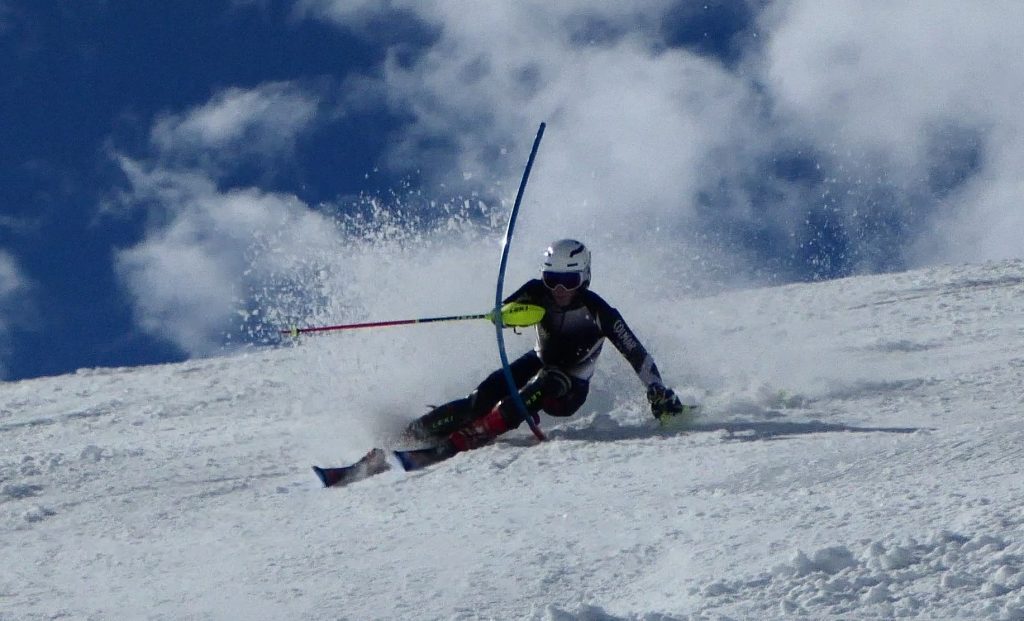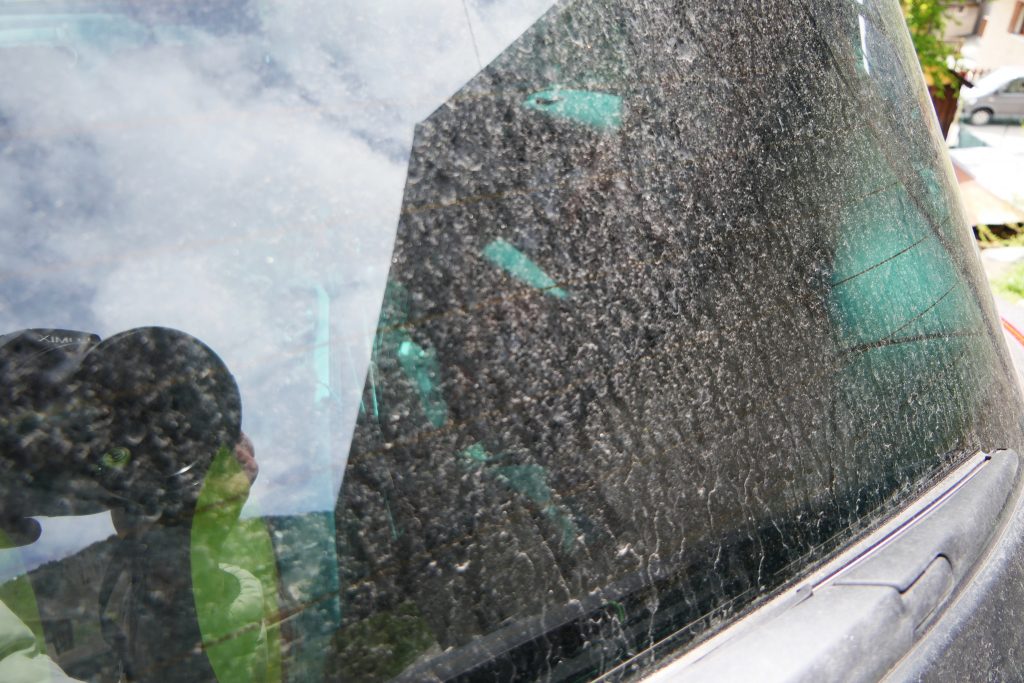Well done Johanna overcoming the anxiety of dealing with steeper slopes. Progressively developing dynamics is the way to have this result in even more challenging situations.
Lochie’s left ski runs away with him on most turns – the ski locking on its edge – which is tiring him out. His best way of dealing with this is for him to focus on what his right leg (correctly) does then the left leg – and sense the difference. Today’s skis are designed to lock on edge for carving – perhaps a ski with less sidecut (or a shorter ski) would help to break the habit.
- Combining Pivot and Snowplough
- Pivot
- Combining Dynamics and Pivot
Combining Pivot and Snowplough – Lower Ski Stem
Snowplough can provide an important platform for learning how a ski pivots.
While traversing the slope in a snowplough weight must be kept on the downhill ski.
If traversing with skis parallel then a lower ski stem is used in preparation to turn.
(Conventional ski instruction tells us to transfer weight to the uphill ski to start a turn – but that is completely wrong.)
First of all a skier needs to know how to use the plough to generate complete control of speed – and that means NOT transferring weight to the uphill ski. Weight is allowed to always be on whatever ski is further down the mountain. That ski will always be on its uphill edge and so it will act as a supportive brake.
Through the first half of a turn this supporting/braking ski will gradually pivot (sliding sideways) as the plough comes around the turn. Meanwhile the outside ski in the turn requires the adductor muscles to be engaged – so as to shift the body (centre of mass) slightly towards the centre of the turn and edge the outside ski slightly more than the inside ski – to enable a deflection/turning force from the ski. If the skis were parallel before starting the turn then a stemming of the lower ski only (pushing out with the tail) into a plough helps pull the centre of mass in towards the centre of the new turn. Additionally the outside foot of the turn can be pushed forward (Feet Forward Technique) to tighten the turn.
When the plough is pointing directly downhill the outside ski in the turn will take over as being the furthest down the mountain – continue to keep the adductor muscles in that leg engaged until the turn is complete – resisting gravity which now demands extra work of the skier to remain in towards the centre of the turn.
The feet are generally “inverted” when using a braking snowplough as well as having the adductor muscles relaxed – however the first turns a skier should make are with the contraction of the adductor muscle of the outside leg and an “eversion” of the foot inside the ski boot. When the center of mass is well controlled then eventually adductors of both legs can be engaged for the entire turn.
Combining Dynamics and Pivot
- Dynamics depends of forward motion of the skis and lateral falling/pushing of the centre of mass
- Pivot depends on lateral motion of the skis – but always with the centre of mass being driven inward (toward the turn centre) modulated by the support of a pole plant
- The two can be combined – when there is both forward and lateral motion – making overall control of trajectory and speed totally under control of the skier
- In all cases there must be active adductor muscle use – and the feet must be “everted” i.e. turned outward inside the ski boots – diverging sightly (skating stance)
- The essential element to take from combining pivot and dynamics is to execute the turn transition from the uphill edge of the uphill ski – noting that the ski enters the new turn more easily than when on its inside edge and this also prevents stemming (and body rotation)
- Additionally with the transition between the two turns being made from the uphill edge it’s easy to switch into a very tight pivot when desired
Look at the skis in the two images below. The top image is with skis carving – the bottom image skis pivoting


Car windscreen covered in Sahara sand!


